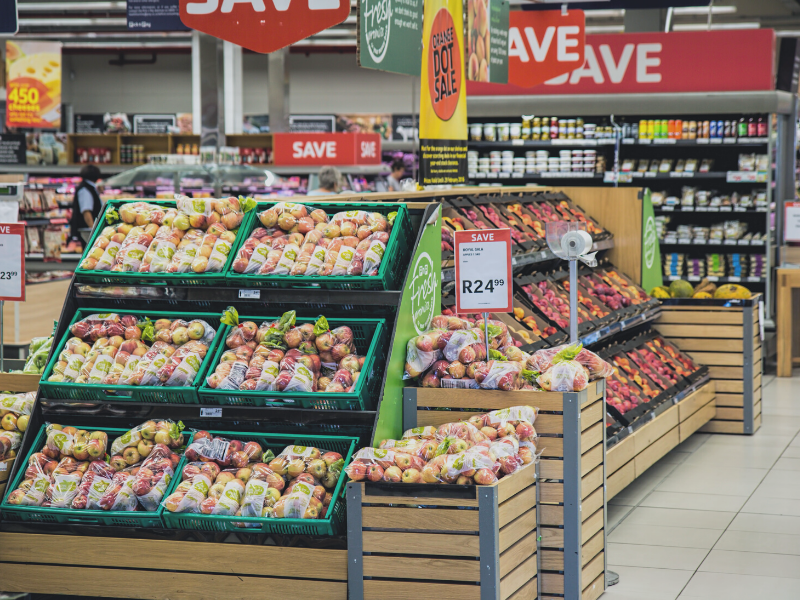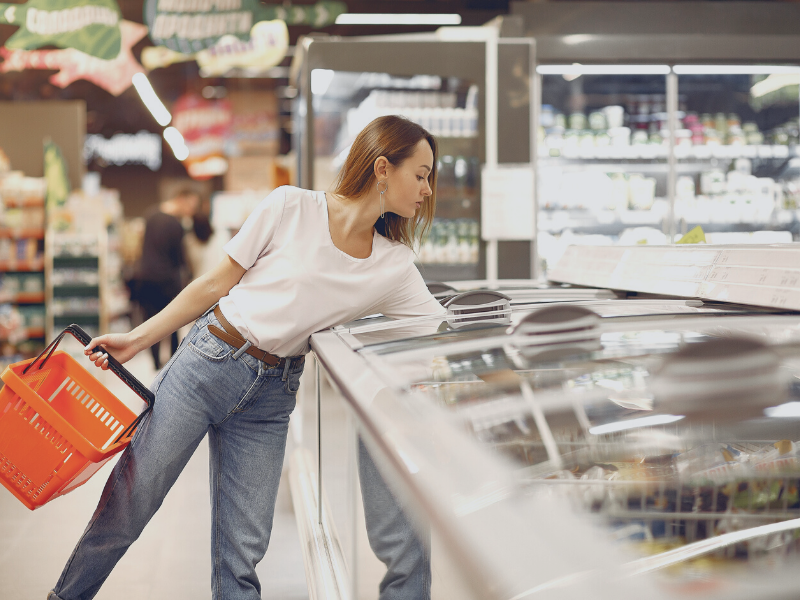In-store product placement means organizing and displaying your products according to a pre-determined sales plan. Creating a “planogram” can help you and your team follow a blueprint for designing, planning, and shelving the retail products you want to push. A well-designed planogram can make or break your business. Efficiency in this area can lead to a boost in sales with enhanced brand recognition.
Your Personal Guide to Retail Product Placement Success.
For supermarkets and grocery retail stores, presenting your products to the public is incredibly important. From finding the perfect shelf location to allocating just the right amount of space, Affinity Group is here to help you navigate your bridge to retail success with a personal guide to product placement that will help you drive results for your retail business.

If you want to make the most out of your grocery retail space, it’s important to keep in mind a few essential elements that go into creating the creating the perfect planogram. These include the size of the store, items being sold in each category, foot traffic, high-demand products, and shelving space available. It’s also important to consider lighting, the customer base’s demographics, amount of square foot allotted, and your best seller items. The width, usage of mirrors, and foot space are also factors to consider as you construct your planogram.

HAVE QUESTIONS ABOUT OUR RETAIL SERVICES?
1. Placement of Essentials
Generate more sales with this proven supermarket product placement trick: Make your customers work for what they want by placing staple food like bread, butter, milk, eggs further into the interior of your store. This way, your customers will have to pass through all the luxury items to get to the basics. Walking through aisles full of temptation entices them to buy beyond just the essentials.

- Eye-Level Advantage
In the retail world, displaying your products at eye level is known as the buy level. Shelves at the bottom are appropriate for children, while women usually gaze first at the shelves right in the middle. Men, however, will pay more attention to shelves that are one above women’s level of gaze. In general, the second and third shelves are the best place to put your best-selling items and high-margin products.
- Sales and Marketing
Simply placing your products at level doesn’t cut it in today’s battle for customers attention. You also need to place the product in their minds, which is possible through smart marketing. Whether it is print, online or digital, a smart marketing strategy can make sure your customers are looking for the products you want to push before they even enter your store.
- Impulse Buying
According to statistics, the average shopper makes 3 unplanned purchases in 4 out of every 10 store visits they make. Make the most out of high traffic and checkout areas by creating space for magazines, chocolates, or even chewing gum. These are non-essential items that are both desirable and affordable. The goal is to entice your customer to impulsively add them to their carts while waiting at the checkout or paying for their items.
- Cross-selling and Up-selling
Cross-selling is a great sales boosting technique that also helps remind customers making a particular purchase of other things that might go well with it. For example, chocolates and flowers are placed together for gift-givers, batteries near electrical goods, and detergents are placed near cleaning tools. Up-selling is the art of persuading your customer to make another purchase of higher value paired with the one they initially chose. Set a space for add-ons near the checkout area to remind your customer of what they have missed out on.
- Endcap Displays
End caps can be used for multiple purposes. From the perfect place to display your products, to creating signage that showcases all your sales, best-selling items, and new arrivals; endcaps make it easy to prioritize product placement.
Conclusion
How you display your retail offerings is always going to be directly proportional to the success of your store. Keep in mind that the sales experts at Affinity Group are here for you every step of the way to provide the product placement tips you need to maximize sales and continue building your bridge to success.